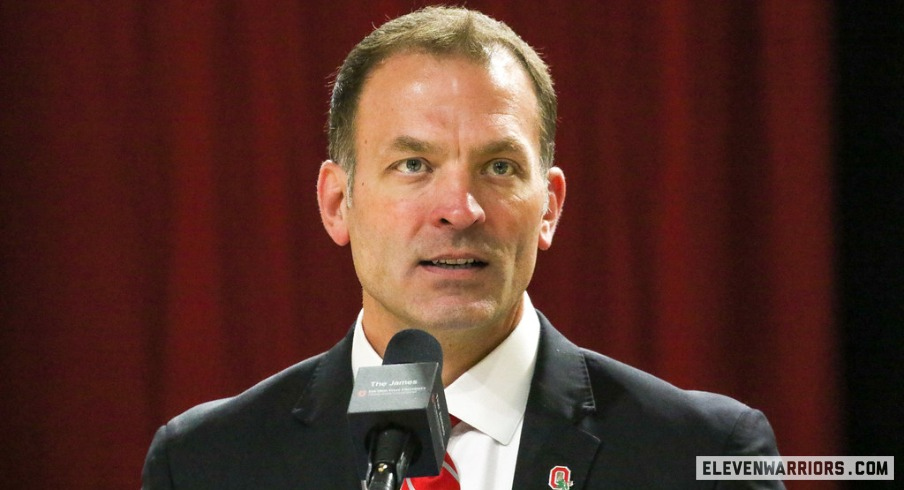Incoming Ohio State athletic director Ross Bjork said NIL is something OSU must “embrace heavily” but believes it’s time for a new model of paying college athletes.

www.elevenwarriors.com
ROSS BJORK SAYS NIL IS SOMETHING OHIO STATE MUST “EMBRACE HEAVILY,” BUT WANTS NEW MODEL FOR PAYING ATHLETES
During his opening statement at his introductory press conference Wednesday, soon-to-be Ohio State athletic director Ross Bjork laid out what he believes his responsibilities are as an AD.
The third item to hit his list after building culture within the athletic department and developing Buckeye coaches was fundraising, both in the NIL space and at large.
“Revenue generation, revenue acquisition, we have to embrace all of it,” Bjork said. “NIL to buying a T-shirt and everything in between is something that we will embrace heavily and we will get after it.”
Indeed, one of the biggest attractions of hiring Bjork was his ability as a fundraiser and fund manager. Texas A&M, his previous destination, had reported massive NIL coffers that helped the Aggies secure the nation’s No. 1 football recruiting class in 2022.
Bjork also saw Texas A&M pull in the seventh-most revenue nationwide in 2022, per USA TODAY. The Aggies’ athletic department generated a reported $193,139,619 that year.
It’s something Bjork will need to have Ohio State on the forefront of as the college football landscape sees heavier and heavier influence from NIL year after year with the potential for players to be paid directly in the near future.
“I needed someone that could come in and understand this ever-changing landscape of collegiate athletics,” Ohio State president Ted Carter said. “Name, image and likeness, potential revenue sharing, the changing landscape of conferences, expansion, expansion of the College Football Playoff and even NCAA structure and governance.”
Elaborating further, Carter said he’s going to lean on Bjork to advise him on important conversations and decisions related to NIL.
“Name, image and likeness, I’d say we’re still in the early stages of it,” Carter said. “We’re still learning a lot more about it. There’s gonna probably be a lot more regulations put around that. I think that will tie, eventually, to what Ross was already talking about in whatever shared revenue models that will go into the future.”
On that subject, Bjork is in full support of a player revenue-sharing model.
“We need to chart a new course for the financial arrangement, the financial agreement between the athlete and the institution,” Bjork said. “We can call that whatever we want, but that’s where we’re going. We need to recreate that model, period.”
Fundraising is something that seems to come naturally to Bjork. In his words, it’s all about people. Forming relationships and communicating both the ambitions of a given team or piece of the athletic department and what Ohio State will need in terms of support to try and reach those goals.
“It’s really not that hard,” Bjork said. “If you’re organized, if you’re accessible, if you lay out a vision, typically you don’t have to ask. The donor typically says, ‘Wow, I really like that. What do you need?’ Then there’s technical proposals and things like that, but it’s all about the relationship. Then our job is to activate their passion, whatever that might be, through discussion, through stewardship, through cultivation.”
.
.
.
continued





